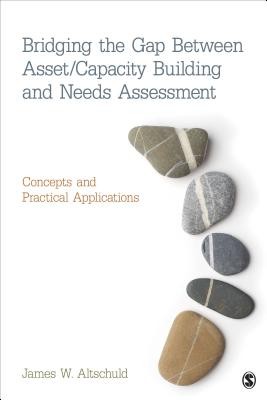
- We will send in 10–14 business days.
- Author: James Altschuld
- Publisher: SAGE Publications, Inc
- ISBN-10: 1452220190
- ISBN-13: 9781452220192
- Format: 15.2 x 22.9 x 1.8 cm, softcover
- Language: English
- SAVE -10% with code: EXTRA
Bridging the Gap Between Asset/Capacity Building and Needs Assessment (e-book) (used book) | bookbook.eu
Reviews
Description
In the groundbreaking text, Bridging the Gap Between Asset/Capacity Building and Needs Assessment, James W. Altschuld examines the synthesis of two antithetical ideas--needs assessment and asset/capacity building. At the heart of this approach is a focus on assessing the strengths and assets that communities have and demonstrating how to make those assets stronger. The author explains the foundation of needs assessment and asset/capacity building, discusses their similarities and differences, and offers a new hybrid framework that includes eight steps for how they can be done jointly for better results. The author then applies a checklist for judging the quality of this approach to six cases that represent real-world applications of hybrid principles. The last chapter demonstrates how such efforts might be studied in the future, emphasizing ways findings and results from hybrid ventures can be used effectively. A wide range of examples, tables, and figures appear throughout, with insightful discussion questions at the end of each chapter to facilitate meaningful discourse.
EXTRA 10 % discount with code: EXTRA
The promotion ends in 20d.11:32:03
The discount code is valid when purchasing from 10 €. Discounts do not stack.
- Author: James Altschuld
- Publisher: SAGE Publications, Inc
- ISBN-10: 1452220190
- ISBN-13: 9781452220192
- Format: 15.2 x 22.9 x 1.8 cm, softcover
- Language: English English
In the groundbreaking text, Bridging the Gap Between Asset/Capacity Building and Needs Assessment, James W. Altschuld examines the synthesis of two antithetical ideas--needs assessment and asset/capacity building. At the heart of this approach is a focus on assessing the strengths and assets that communities have and demonstrating how to make those assets stronger. The author explains the foundation of needs assessment and asset/capacity building, discusses their similarities and differences, and offers a new hybrid framework that includes eight steps for how they can be done jointly for better results. The author then applies a checklist for judging the quality of this approach to six cases that represent real-world applications of hybrid principles. The last chapter demonstrates how such efforts might be studied in the future, emphasizing ways findings and results from hybrid ventures can be used effectively. A wide range of examples, tables, and figures appear throughout, with insightful discussion questions at the end of each chapter to facilitate meaningful discourse.


Reviews